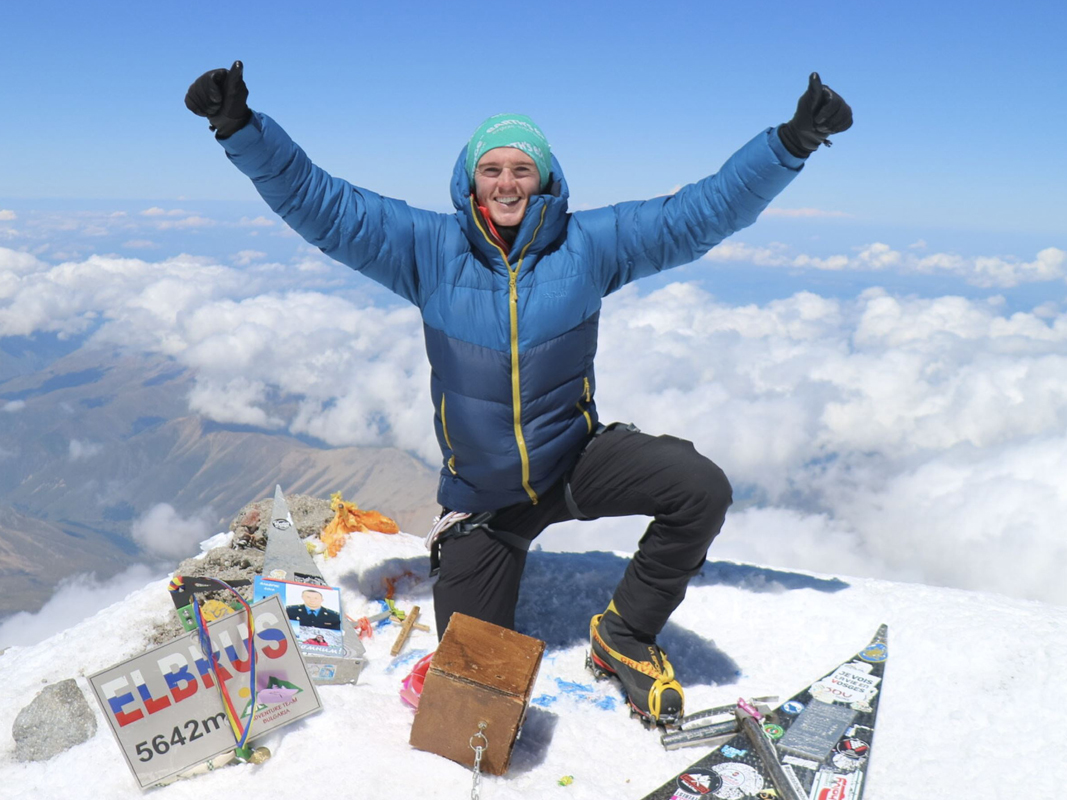Everest 2023 – Irish Season Outlook
Another Everest climbing season is upon us, and Irish climbers are among the throng at Everest Base Camp in Nepal (Tibet side is still closed to all bar Chinese climbers) many of whom are completing their initial adaptation and are about to head off on their first rotation up the high mountain from Everest Base Camp.
According to the Himalayan Database, Everest has been successfully climbed 11,341 times since the first ascent by Edmund Hillary and Sherpa Tenzing Norgay in 1953. The route split is 7695 South (via Nepal) and 3646 North (via Tibet). The gender split is 10,519 Male and 822 Female. The average age of summiteers is 34.8 years. Of the 11,341 summits, 221 (1.9%) were without supplementary oxygen, 11,120 (98.1%) were achieved with bottled oxygen. Here’s a look at the top 20 global locations of Everest summiteers:
- Nepal: 5698
- USA: 964
- China: 823
- India: 577
- Great Britain: 488
- Japan: 258
- Russia: 230
- Canada: 148
- France: 140
- South Korea: 136
- Australia: 135
- New Zealand: 106
- Spain: 104
- Germany: 90
- Austria: 86
- Italy: 86
- Switzerland: 85
- Ireland / N. Ireland: 74
- Norway: 72
- Poland: 67
In terms of the 2023 Spring season, the Kathmandu Post reported on 25th April that Nepal’s Ministry of Tourism has issued a record 454 permits to climb Everest as of last Friday, which is the most Everest permits ever issued for a single season and a 33% increase over the past 10 seasons. If you add guides and wider team support to that total, the amount of people on the Nepal side of the mountain this season will be in excess of 1000!!! Whether that results in crowding up high remains to be seen, and is dependent on the size and shape of the summit weather window in mid May. Fingers crossed the weather plays ball and the crowds get up and down safely. Here is a summary of Everest permits issued by Nepal since 2013.
- 2013: 315
- 2014: 341
- 2015: 357
- 2016: 289
- 2017: 375
- 2018: 347
- 2019: 381
- 2020: Closed
- 2021: 408
- 2022: 325
- 2023: 454
In terms of summits, here is a summary of all Everest summits since 2013:
- 2013: 684
- 2014: 134 (Nepal side closed – Avalanche)
- 2015: 0 (All sides closed – Earthquake)
- 2016: 679
- 2017: 692
- 2018: 819
- 2019: 877
- 2020: 28 (Nepal closed, Tibet – Chinese only)
- 2021: 472
- 2022: 683
The trend in permits and summits is clearly and steadily upward and the key question is how many people can Everest absorb safely given the unpredictability of the weather and varying size and shape of the summit window. The extreme concern is that an unexpected change in weather late in the season collides with a mass movement of hundreds towards the summit, and the result could be a catastrophe. At some level it feels as though we are moving towards that eventuality. I hope I am wrong.
The average cost of an Everest expedition is between €35,000 and €45,000 but can go all the way up to €145,000 depending on the level of comfort and support a client wants and can afford to pay for. The US blogger Alan Arnette published a decent summary of costs in February which you can read here. Within that cost is the price of the permit to climb the mountain, which is purchased from the Nepal government at a cost of €10,000 ($11,000) per climber for foreigners and €520 (Rs75,000) per climber for Nepalis. The Kathmandu Post reports that Nepal’s Tourism Department has collected €4.4 million in fees for Everest alone this season, the highest revenue collection on record and very welcome at a time when the government is struggling with a revenue shortfall.
From an Irish perspective, Everest was climbed 74 times by 57 Irish climbers (9 women, 48 men) since the first Irish ascent by Dawson Stelfox in 1993, with a total of 144 Irish attempts to climb the mountain over the years (including a couple of attempts by yours truly). Full details on all of the Irish summits and attempts can be found here.
This season there are three Irish climbers attempting Everest.
– Tom Cleary (28) from Dublin
– Ryan O’Sullivan (26) from Sligo
– Johnny Ward (39) from Down
All three are in the final stages of their respective Seven Summits journey, all three are climbing via the South (Nepal) route within guided commercial expedition teams, and for all three this will be their first climbing experience above 7,000m.

Tom Cleary
(Cancelled)

Ryan O’Sullivan
(Climbing)

Johnny Ward
(Climbing)
Tom Cleary (28) is climbing within Mike Hamill’s Climbing the Seven Summits (CTSS) expedition team, and in an interview recently Tom confirmed that he has paid $65,000 for his climb plus $10,000 for insurance. CTSS is one of the largest expedition teams on Everest this season. Everest will be Tom’s seventh and final summit of the Seven Summits challenge, and he is aiming to become the youngest Irish climber to complete the Seven Summits (Bass list). His expansive (and impressive) physical preparation included training and sleeping in simulated altitude via The Altitude Centre in Dublin and London (link). Tom comes from Milltown in County Dublin and has created and is selling a custom whiskey to commemorate his climb, via his family business ‘The Temple Bar’ pub in Dublin’s iconic Temple Bar. You can find more details on the whiskey here. You can follow Tom on instagram @tomcleary23. [Update: Tom ended his expedition early, announcing on social media on 24th April 2023 that his decision came down to ‘safety on the mountain’]
Ryan O’Sullivan (26) is climbing within Dan Mazur’s Summit Climb expedition team, which costs up to €40,000 per client according to the expedition company website. Ryan is from Grange in County Sligo and has a 1st Class Bachelor’s Degree in Theoretical Physics from UCD. Like Tom, he is also attempting to climb the Seven Summits (Bass list), with five summits done and Antarctica (Vinson Massif) and Asia (Everest) left to climb. Like Tom, he is also aiming to become the youngest Irish climber to complete the Seven Summits. Ryan climbed Kilimanjaro aged 16 and his training over the last 12 months has included climbing Denali in Alaska, ultra cycling events, running a marathon and countless ascents of Croagh Patrick. His preparation included training and sleeping at simulated altitude via Altipeak in Dublin (link). You can follow Ryan on instagram @ryan_j_sullivan.
Johnny Ward (39) is climbing within Lukas Furtenbach’s Furtenbach Adventures classic expedition team, which costs €70,000 per client according to the expedition company website. Johnny was born in Galway but raised in Kilkeel in Co. Down and is a self-professed (and self-made) millionaire who is aiming to become the first person in the world to (a) visit every country, (b) travel to North and South Poles and (c) climb the Seven Summits (Bass lists). He rowed the Atlantic in 2021, spending fifty days, five hours and seven minutes rowing 3,200 nautical miles across the Atlantic Ocean. He also ran the North Pole marathon and climbed five of the Seven Summits, with Vinson Massif and Everest left to climb. You can read Johnny’s story on his website here. You can follow him on instagram @onestep4ward.
It is perhaps worth adding a few words about Seven Summits cost. The last time I attempted Everest in 2015, it was the final peak of my eight-year Seven Summits journey, and by 2015 (at aged 37) the Seven Summits had cost me in excess of €150,000 to get to the foot of the 7th peak (and we budgeted and spent sensibly-ish). The vast majority of my funds came from 15 years of career savings. Perhaps sponsorship is a much bigger element nowadays, I don’t know, but given how much more expensive the journey would be today versus when I was attempting it, I am fascinated by those heading for their final ‘Seven’ peak at such a young age. Perhaps someone could expand on this in a podcast at some point, because understanding how to fund these massive expeditions is a big part of the psychological wall you have to negotiate before proceeding with such big projects. I have no doubt the three guys will have interesting insights to impart on that topic, and i would encourage much more open discussion on the topic for the benefit of all who aspire, with or without means.
Aside from Everest, an Irish climber (who will remain unnamed for the moment per his wishes) who has successfully climbed two 8,000m peaks previously, is currently attempting Makalu (8485m), while James McManus from Tipperary is currently attempting Dhualagiri (8,167) without supplementary oxygen, which would be his first climb above 8,000m. James made a bid to climb Everest in 2022 without supplementary oxygen, but had to turn back at 7,850m due to weather conditions. Neither Makalu nor Dhualagiri has ever been successfully climbed by an Irish person. Wishing both climbers a safe and successful climb.
Finally, Noel Hanna from Dromara in Co. Down reached the summit of Annapurna I last week, but unfortunately passed away in his tent at Camp IV during the descent. I penned a tribute to Noel here. His funeral takes place in Belfast on Saturday 29th April, and we send our deepest condolences to his wife Lynne and the wider Hanna family. His loss is very much felt during this Everest season.
Everest – The Latest Numbers
Note: Stats for Irish climbers of Everest from Republic of Ireland and Northern Ireland are combined on this website. That is not a political statement, it is a reflection that climbing and trekking on the Island of Ireland from the mighty Mournes to the MacGillycuddy’s Reeks and stretching out into the world beyond, has a long and proud cross-community and cross-border makeup which transcends political and religious backgrounds. Some Everest climbers from Northern Ireland have climbed on their British passports and are proud of their identity as Northern Irish and British, while others from both North and South have climbed on their Irish passport and are equally proud of their Irish identity. Live, let live, and climb!
The author: Paul Devaney is a native of Longford, is co-founder of the Irish Seven Summits project and an aerospace freelancer based in London. Paul is an amateur mountaineer and has completed six of the Seven Summits and attempted Everest in 2014 and 2015. In both seasons his expedition was halted due to major incidents (Avalanche in 2014, Earthquake in 2015). Paul has climbed and trained in the Alps and completed climbs from Alaska to Antarctica and from Jordan to Ecuador. He lives in London with his wife Rima and twin daughters, and has been documenting Irish climbers on Everest & 8000m peaks since 2014.


